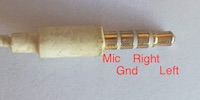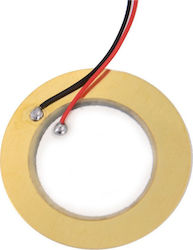mirror of
https://github.com/pschatzmann/arduino-audio-tools.git
synced 2024-09-21 02:17:31 +00:00
Page:
Audio Input and Output
Pages
Audio Boards
Audio Effects
Audio Input and Output
Audio Metadata
Audio Sources and Sinks
Communication
Converting the Data Format
Converting the Number of Input and Output Channels
DSP Libraries
Design Principles
Determining the Volume
Encoding and Decoding of Audio
Equilizer
Examples
External ADC
External DAC
External TDM DACs
FFT
Faust
Filters
Home
Interactive Audio
Introduction
It's not working
Jupyterlab
Low Latency Streaming of Audio
MemoryStream: Converting a File to Flash Memory
Multicore Processing
Optional Libraries
Performance
Pipelines
Pitch Shifting
Project Status
Propagation of Audio Format Changes
Pure Data
Resampling
Running an Audio Sketch on the Desktop
Splitting and Merging Audio
Supported Architectures
Supported Scenarios
TensorFlow Lite MicroSpeech
Tensorflow Lite Audio Output
The Audio Player Class
Using the Framework w o Arduino
Using the Project as library with cmake
Vector, Allocators & PSRAM
Volume Control
Working with PlatformIO
Writing your Custom Input&Output Class
31
Audio Input and Output
Phil Schatzmann edited this page 2024-09-10 18:12:51 +02:00
Table of Contents
There are different mechanisms to output sound with Microcontrollers:
Audio Sinks
The stream of PCM audio data can be copied to an audio sink in order to render the sound to a output device:
- I2S: The best quality can be achieved with the help of I2S and an external DAC. I2S is as digital protocol which is supporting 2 channels only. You can then e.g. connect the analog output of the DAC to your Stereo HIFI Amplifier. . You can use I2S with the I2SStream class. (See example)
- I2S with an Audio Chip: Some I2S Audio chips need to be configured dynamically to work. The I2SCodecStream or AudioBoardStream classes are used for this scenario.
- TDM: TDM is similar to I2S with the difference that it supports more then 2 channels.
- SPDIF: If your audio equipment provides a digital input via SPDIF or Toslink you can feed the digital signal directly. You will need a corresponding connector however. Use the SPDIFStream:(See example)
- Analog/PCM: Some processors are providing an analog output, this is usually an easy and good approach: The number of pins (and herewith output channels) however is usually very limited. (example). This is currently only supported for regular ESP32 using the AnalogAudioStream
- PDM: Pulse Density Modulation is an alternative way to "simulate" an analog output. Since the newer ESP32 chips do not provide an Analog output via I2S this is the perfect replacement. On the ESP32 you can use PDM with the I2SStream class, by setting PDM to the signal_type in the configuration.
- R-2R: You can build your own DAC with some simple resistors. The DAC is driven by n-digital pins: so with e.g. 4 pins you get a 4bit DAC. This functionality is provided by the R2ROutput class. (example)
- PWM: The last possibility is to simulate an analog output with the help of PWM by using a frequency which is beyond the audible range of 20 KHz. This method is supported by all processors and usually supports a bigger number of output pins. In terms of audio quality this is usually the worst option and it is recommended to use a low pass filter to transform the digital signal into an analog one. This functionality is provided by the PWMAudioOutput (example)
Output Devices
The analog or pwm output is not powerful enough to drive any speakers, but it is sufficient for some
- Earphones
- Piezo Electric Elements
- Speakers
In order to drive some speakers you will need an Audio Amplifier Module (e.g. a class D Audio Amplifier)
If you do do have an amplifier at hand you could try to use a simple motor controller or build your own amplifier using some MOSFETs.
Audio Sources
Here are the most important classes, that can be used for reading audio data
- I2SStream: Reading the data from a DAC or Microphone that has an I2S interface
- AnalogAudioStream: Reading analog data.
- URLStream: Reading the data from the internet
- File: Reading the data from a file
The complete list of the supported Input/Output classes can be found in the class documentation.

